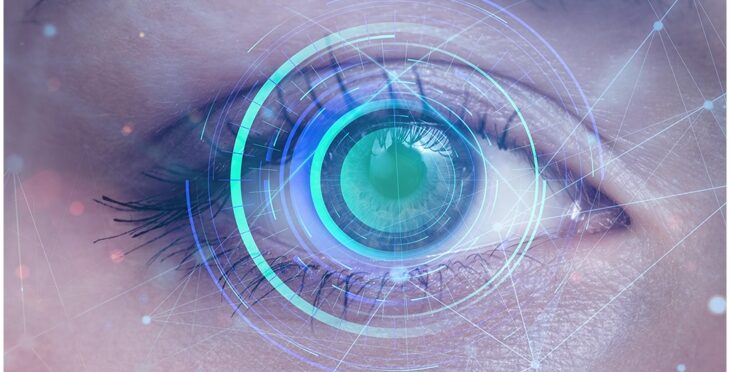Refractive Surgeries in AL: Boost Your Vision with Specialist Treatment
Refractive Surgeries in AL: Boost Your Vision with Specialist Treatment
Blog Article
The Role of Advanced Diagnostic Devices in Identifying Eye Disorders
In the realm of ophthalmology, the use of innovative diagnostic devices has actually revolutionized the early identification and administration of different eye disorders. From identifying refined changes in the optic nerve to monitoring the development of retinal illness, these technologies play a critical function in improving the accuracy and efficiency of diagnosing ocular conditions. As the demand for specific and timely diagnoses continues to grow, the assimilation of innovative devices like optical comprehensibility tomography and visual area testing has actually ended up being indispensable in the realm of eye care. The intricate interaction in between technology and ophthalmic practices not only sheds light on complex pathologies but likewise opens up doors to customized therapy methods.
Value of Early Medical Diagnosis
Early diagnosis plays an essential duty in the efficient administration and therapy of eye problems. Prompt identification of eye problems is essential as it enables prompt intervention, potentially stopping additional development of the illness and lessening lasting problems. By identifying eye problems at an early phase, doctor can use suitable treatment plans customized to the certain problem, ultimately bring about far better results for patients. Very early medical diagnosis makes it possible for people to access necessary support solutions and resources faster, enhancing their overall top quality of life.

Modern Technology for Spotting Glaucoma
Cutting-edge diagnostic innovations play an important duty in the very early discovery and surveillance of glaucoma, a leading source of irreversible blindness worldwide. One such modern technology is optical comprehensibility tomography (OCT), which provides detailed cross-sectional photos of the retina, enabling the dimension of retinal nerve fiber layer thickness. This measurement is crucial in analyzing damage created by glaucoma. An additional innovative device is visual field testing, which maps the level of sensitivity of a person's visual area, assisting to identify any type of locations of vision loss characteristic of glaucoma. Furthermore, tonometry is used to gauge intraocular pressure, a major risk factor for glaucoma. This test is crucial as elevated intraocular pressure can lead to optic nerve damages. In addition, more recent modern technologies like making use of expert system algorithms in assessing imaging data are revealing appealing cause the early detection of glaucoma. These advanced diagnostic tools enable eye doctors to detect glaucoma in its beginning, enabling prompt treatment and far better monitoring of the condition to stop vision loss.
Function of Optical Coherence Tomography

OCT's ability to measure retinal nerve fiber layer thickness allows for precise and unbiased measurements, assisting in the early detection of glaucoma also before aesthetic field issues come to be apparent. OCT innovation allows longitudinal tracking of architectural modifications over time, promoting customized therapy plans and prompt treatments to help maintain patients' vision. The non-invasive nature of OCT imaging additionally makes it a preferred choice for keeping track of glaucoma development, as it can be duplicated on a regular basis without causing discomfort to the person. Overall, OCT plays a vital role in improving the analysis precision and management of glaucoma, eventually adding to far better outcomes for individuals in jeopardy of vision loss.
Enhancing Diagnosis With Visual Field Screening
A crucial part in comprehensive ophthalmic assessments, visual field testing plays a critical function in improving the diagnostic process for different eye conditions. By examining the complete degree of a person's aesthetic area, this examination gives crucial details concerning the useful honesty of the whole aesthetic path, from the retina to the visual cortex.
Visual field screening is specifically beneficial in the medical diagnosis and monitoring of problems such as glaucoma, optic nerve problems, and numerous neurological illness that can impact vision. With quantitative measurements of peripheral and central vision, clinicians can detect refined modifications that may indicate the presence or development of these conditions, even prior to obvious signs occur.
Furthermore, aesthetic field testing permits the tracking of treatment efficiency, assisting ophthalmologists customize therapeutic treatments to private people. eyecare near me. By tracking modifications in visual area performance over time, medical care carriers can make informed decisions concerning adjusting drugs, advising medical treatments, or implementing various other ideal their explanation measures to maintain or enhance a client's aesthetic function
Handling Macular Degeneration

Verdict
Finally, progressed analysis devices play a crucial role in recognizing eye problems early on. Technologies such as Optical Coherence Tomography and aesthetic area screening have actually substantially boosted the precision and effectiveness of identifying problems like glaucoma and macular deterioration. Early detection enables for timely intervention and administration of these conditions, eventually resulting in better outcomes for patients. It is crucial for health care experts to stay upgraded on these advancements to give the most effective feasible treatment for their clients. eyecare near me.
Report this page